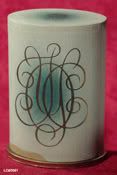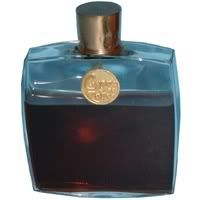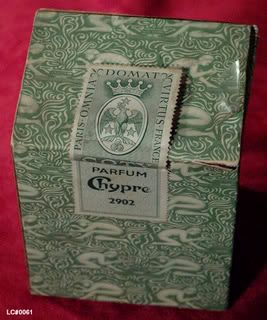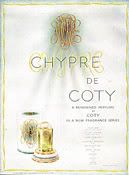
By guest writer Denyse Beaulieu/Carmancanada
When friends complained to Pablo Picasso that the portrait of Gertrude Stein he’d just painted didn’t look like her, he answered something along the lines of: “Don’t worry. It will.”
Though the famous portrait was executed in 1904, well before Coty even dreamt of his mythical Chypre – he’d only just come out with his first fragrance, La Rose Jacqueminot, well anchored in the figurative tradition of perfumery at the time – it is what comes to mind when I try to analyse his 1917 Chypre. Does it in any way resemble its long and illustrious line of descendants, from the me-too Millot Crêpe de Chine or Chypre Sauzé to Jacques Guerlain’s two-tiered answer to his rival, Mitsouko and Sous le Vent, the 1946 double-whammy of Germaine Cellier’s leather-laden Bandit and Edmond Roudnitska’s rich, mulled-spice Femme, on to Christian Dior’s masterful trilogy of Miss Dior (Paul Vacher), Diorling and Diorama (both by Roudnitska), culminating it the very épure of Chypre-ity that is Yves Saint Laurent’s first namesake fragrance, Y…
It would. It will.
Smell Coty Chypre as you would scrutinize the sepia photograph of an ancestor and, yes, you will find the bone structure: bergamot, floral heart, oakmoss and labdanum. But the expression of the face, the inscrutable screen of these eyes and what they were gazing upon, what film passed in front of them as the model posed, how can you penetrate that otherness, sunk in another time?
If Chypre had a gaze, it would have seen the last remnants of the ancient order falling apart. The 19th century rotting in the charnel trenches of the Great War still being fought as it was being composed, bottled and sold; as it adorned the wrists and napes of the last Belle Époque beauties.
Yes, with hindsight, Chypre would come to resemble the family to which it gave its name. But it is set in a world lost to us; a world where heavy blows had already been dealt to our vision of things; the blows out of which the 20th century would emerge. And so it hovers between the old, figurative, narrative order of scent and the invention of modern perfumery – of which François Coty can be said to be the father.
Cubism was already going full steam in 1917. Did Coty like the art? His social and political values would express themselves a few years later, when he bought the daily Le Figaro and used it to express his loathing of communism and his admiration for fascism, Italian style. Though Italian Fascism did, at the outset, attract Modernist movements in art and literature, it would repudiate them for the monumental, pompous art favoured by totalitarian regimes. Perhaps Coty, a powerfully instinctive man as well as a visionary industrialist, had no truck with the Cubists and the Fauves who were the toast of Paris but he did, thanks to his intuition, latch on to the same gesture as his artistic contemporaries. He went primitive; he exhumed the archaic to find the face of modern perfumery. Chypre is not a name chosen by chance: apart from being an island with a powerful perfume tradition (something that the Corsican Coty may well have known), it is the abode of the mighty Aphrodite. Neither the naughty philanderer of late Greek and Roman mythology, nor the slender marble nymph of Classic Greek statuary, or the pearly-fleshed shepherdess of 18th century boudoirs: but the old, stern, primitive, man-eating mistress of the spring renewal of vegetation, the impulse to spring life fed on the death of winter. She sleeps on a bed of earthy moss and pungent herbs, anointed with thick redolent oils of jasmine, bathed in the fumes of sizzling golden resin.

But the goddess is also absolutely modern, in the way that Picasso’s Demoiselles d’Avignon are modern, with their hybrid, primitive African masks and lascivious bordello line-up. François Coty was one of the first – not the first, certainly, for the Guerlains father and son had already used coumarin and vanillin – to fully use the properties of the new synthetics. What’s more, his Chypre is the first step towards abstraction in perfume, which would reach its full expression in Chanel N°5. It doesn’t represent a flower or any other natural odorant; it doesn’t tell a story – unlike its contemporaries, say Guerlain Pois de Senteur or Caron N’Aimez que moi, both launched the same year. Coty had already explored that avenue with his wildly successful L’Origan, mother of the floral orientals, with its methyl-ionone (violet) and dianthine (carnation) accord on an “ambréine” base made of coumarin and vanillin. Edmond Roudnitska called it (I paraphrase, having lost the original reference), “the first modern, brutal perfume”.
Chypre belongs to the same brutal, neo-primitive aesthetics. In the flanks of the 1950s sealed flacon I was lucky enough to acquire, the time-distilled, resinous juice releases a scent that only hints to the later developments of the family. The hesperidic top notes have vanished decades ago, leaving the starring role in the “débouché” – to reprise Roudnitska’s beautiful term – to aromatic herbs, kitchen herbs, really: sage and thyme, and quite possibly vetiver. The floral absolute is jasmine, and it is weighed down with concentrated oils, further pulled into the unctuous base of labdanum, patchouli and oakmoss. In this version, and in the condition it is in, the labdanum’s honeyed, amber notes predominate to pull the composition towards the oriental end of the spectrum. But even in the more modern executions – the 60s eau de cologne, for instance – the amber has pride of place, reinforced by the the vanillin and the hay-like sweetness coumarin. The bitterness and fungus-earthiness of the oakmoss hasn’t yet reached the peak it would when exasperated by isobutyl-quinoline (as in Bandit); or perhaps the vanished bergamot provided the balance between tartness and earthiness. Aphrodite, she of the many guises, is a vegetal goddess: infinitely seductive with her sweet, dizzying fragrances, and willing to take on the adornments of modern chemistry to present a new mask. Her archaic ruthlessness is never far, however, from this attractive surface: Chypre is not a dazzlingly smooth composition like her tawny-flanked daughter Femme would be three decades on, but an assemblage of broad contrasting strokes, grounded on an oriental pedestal of remote antiquity. In a way, it’s amazing that she has given so very different children to so many brilliant perfumers… But she crossed the Mediterranean to visit François Coty in Paris. Perhaps, while kissing him, she bestowed the poisonous gift of hubris, the “sin” (though the term was unknown in Ancient Greece) of exceeding measure and reason through ambition… His disastrous far-right politics and catastrophic divorce ruined Coty, once one of the richest men in the world. He died a pauper. And his Chypre lives on only as a myth – the one scent the majority of perfume lovers dream of seeing risen from the mausoleum of discontinued perfumes – and through her abundant spawn. When you bow your head through time to inhale her essences, it is her daughters you seek. She will come to resemble them. But they can never go back to her utter, arrogant statement.
Pic of Maria Callas from the film by Pasolini "Medea".
Read on the rest of the Chypre Series on Perfume Shrine following the links:
Marble image of Aphrodite, Artemis and Apollo from the Treasure of Siphnians in Delphi, Greece circa 525BC courtesy of
arthist.cla.umn.edu

.jpg)













.jpg)

